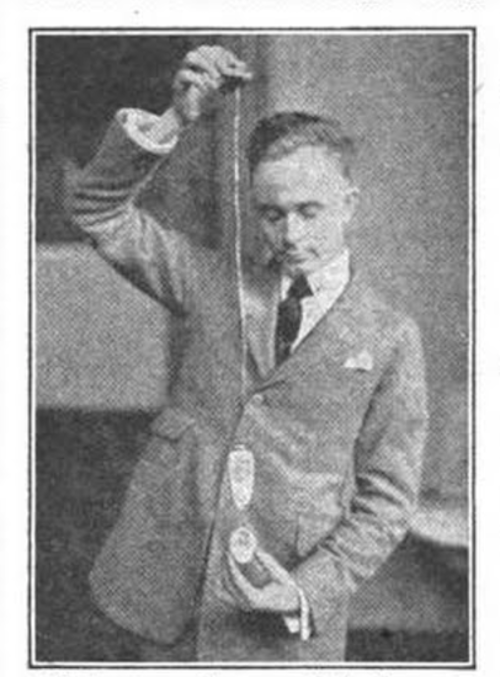The 1920s Sex Detector That Rocked the Poultry Industry
Could it really tell whether an egg held a hen or a rooster?

In the early 20th century, a scam product ruffled a few feathers in the American poultry community: a pendulum that could “instantly determine the sex of humans or animals, whether dead or alive.”
The so-called “sex detector” was essentially a piece of string with a small weight at the end. It had a few variants, according to a 1922 Scientific American article entitled “Sex Detector Exposed”: some of the weights were “nickel plated iron,” while others were “small wooden ball[s], gilded and filled with red lead.”
But all of the sex detectors worked the same way: you held out the device in front of an animal, or, preferably, an unhatched egg, and it would move according to the creature’s sex. The sex detector would “indicate male by a pendulum-like motion, female by a circular motion, and sterility by remaining at a standstill,” reminiscent of popular divination techniques in which pregnant women used pendulums to determine their baby’s gender.

Created by the aptly named company Sex-Detector Laboratories, which was based in San Francisco, the device debuted in numerous poultry magazines in 1920.
The advertisements made no shortage of boasts: the company claimed that their product was developed as “the result of twelve years of patient research and experimentation now made public for the first time.” “Doctors are dumb-founded… at the unfailing accuracy of this miraculous device,” they wrote in an ad for The Poultry Item, arguing that “poultrymen who have used [it] have found it to be infallible in the testing of eggs” and that “a Sex-Detector should be in every home and will last forever.”

In The Leghorn World, they called it “something new under the sun for poultrymen,” the “crowning achievement of modern times,” and “the absolute annihilator of all previous scientific research.” In fact, the sex detector worked even in strange situations: “a wire can be passed through a keyhole into another room—the Sex-Detector will instantly indicate whether a man or woman is holding the other end.”
Because of these extravagant claims, a subsequent account reported that the sex detectors “caused much excitement in the poultry world.” Many farmers hoped to use them to determine the sex of their eggs before they’d hatched and to test the fertility of their stock.
Apparently, the sex detector’s growing prominence in the poultry community inspired competition. Soon after its debut, ads for a knock-off “sex indicator,” this time from the Janos Company in New York City, began popping up.
In fact, this seems to have triggered somewhat of a war in the scam-sex-tester world: in retaliation, Sex-Detector Laboratories began posting all-caps warnings in poultry journals: “BEWARE OF IMITATIONS. THIS IS THE ONLY ORIGINAL SEX-DETECTOR in the WORLD and the FIRST to be put on the market, and we guarantee all of ours, none original unless they come from the SEX-DETECTOR LABORATORIES.”

Regardless, the devices quickly fell from grace. Newspapers like the American Poultry Journal debunked them, and many others followed suit.
The Farm Journal tested the sex detector on a group of unhatched eggs and on “the office cat,” which was male, but which the detector claimed was female. A writer for The California Poultry Journal described how an acquaintance purchased the sex detector and “invited in some friends to see the wonders it performed.” At one point, the group used the detector, inexplicably, “on two silver dollars.” When the device claimed both dollars were male, “the owner of the dollars remarked that was odd, because each dollar had a woman on one side and an eagle on the other.”
As news spread that the sex detectors didn’t work, a reader of The Poultry Craftsman lashed out at the newspapers: “a person cannot be blamed for answering an advertisement for a thing like that. He naturally looks to the owners of papers to keep fraudulent advertisements out.”
By July 1922, the poultry community seemed to have come together in opposition to the fraudulent devices. The Poultry Tribune reported: “all the other leading poultry journals are refusing to carry [the sex detector] ads.” Soon after, the devices faded into obscurity.
Still, maybe it wasn’t all for nothing—the book Pendulum Magic for Beginners claims that, because of the 1920s sex detector hysteria, pendulums enjoyed a small “resurgence of popularity” in the United States.
























Follow us on Twitter to get the latest on the world's hidden wonders.
Like us on Facebook to get the latest on the world's hidden wonders.
Follow us on Twitter Like us on Facebook